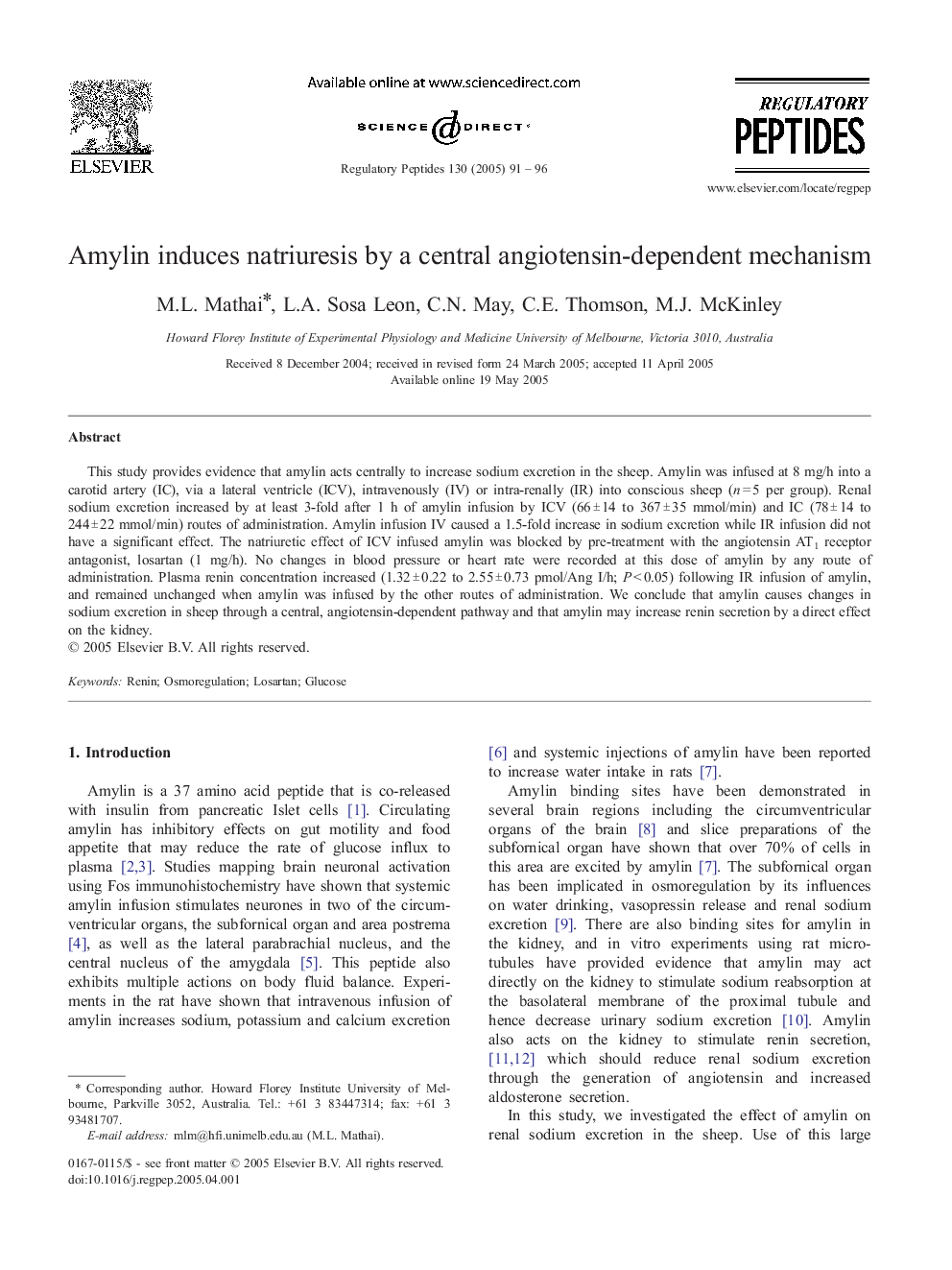| Article ID | Journal | Published Year | Pages | File Type |
|---|---|---|---|---|
| 9894396 | Regulatory Peptides | 2005 | 6 Pages |
Abstract
This study provides evidence that amylin acts centrally to increase sodium excretion in the sheep. Amylin was infused at 8 mg/h into a carotid artery (IC), via a lateral ventricle (ICV), intravenously (IV) or intra-renally (IR) into conscious sheep (n = 5 per group). Renal sodium excretion increased by at least 3-fold after 1 h of amylin infusion by ICV (66 ± 14 to 367 ± 35 mmol/min) and IC (78 ± 14 to 244 ± 22 mmol/min) routes of administration. Amylin infusion IV caused a 1.5-fold increase in sodium excretion while IR infusion did not have a significant effect. The natriuretic effect of ICV infused amylin was blocked by pre-treatment with the angiotensin AT1 receptor antagonist, losartan (1 mg/h). No changes in blood pressure or heart rate were recorded at this dose of amylin by any route of administration. Plasma renin concentration increased (1.32 ± 0.22 to 2.55 ± 0.73 pmol/Ang I/h; P < 0.05) following IR infusion of amylin, and remained unchanged when amylin was infused by the other routes of administration. We conclude that amylin causes changes in sodium excretion in sheep through a central, angiotensin-dependent pathway and that amylin may increase renin secretion by a direct effect on the kidney.
Keywords
Related Topics
Life Sciences
Biochemistry, Genetics and Molecular Biology
Biochemistry
Authors
M.L. Mathai, L.A. Sosa Leon, C.N. May, C.E. Thomson, M.J. McKinley,
